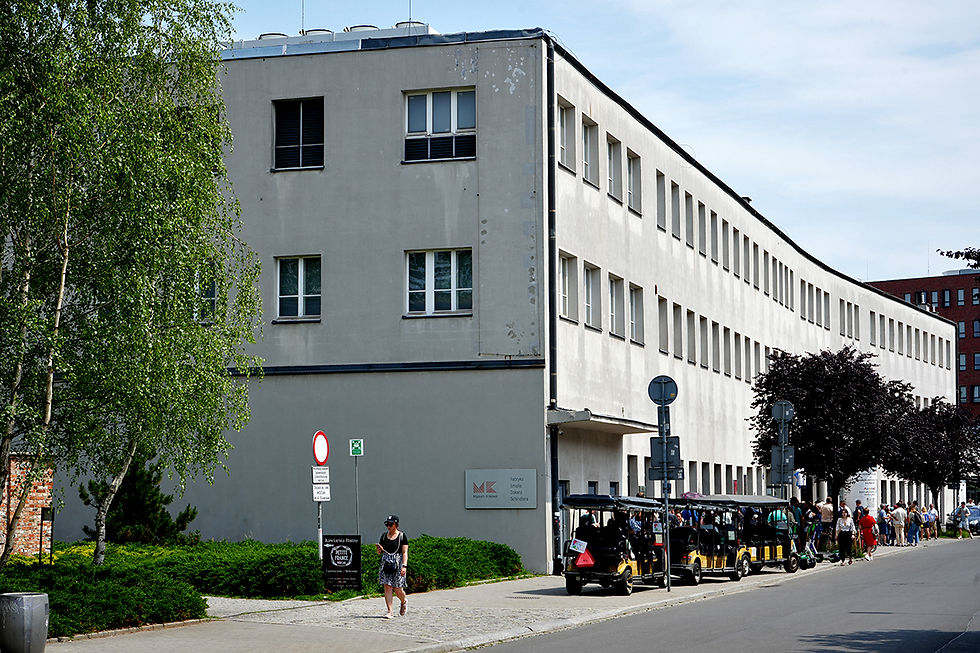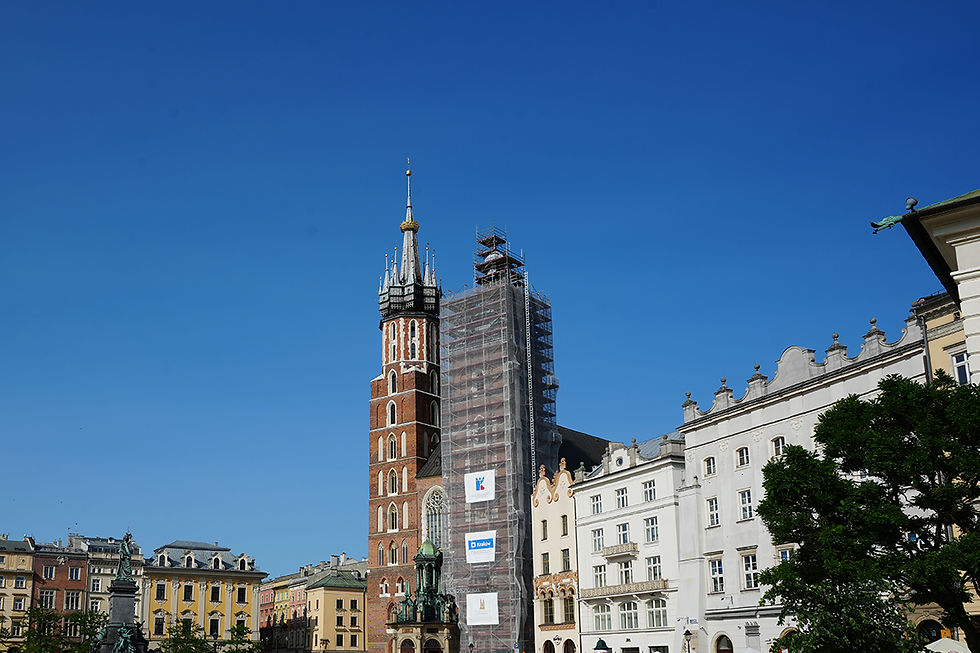Hungry for history
- lavieenroute
- Jul 22
- 4 min read
A city that reveals its identity only at second glance. A place that has been in the world’s spiritual, historical, and cultural focus, though not always voluntarily. A metropolis that dominates the present and makes the past visible. Off we go again to Poland.
It is 1978. In Rome, a 58-year-old bishop and professor from Poland is elected Pope. In the same year, the city where he held his bishopric is awarded UNESCO World Heritage status.
This city is called Kraków (or Krakow in English). The second-largest city in Poland is therefore a big name when it comes to religion and architecture.
And otherwise?
We didn't quite know what to expect at the beginning of the journey either.
Krakow's picturesque old town.

Without a doubt, the old town of Krakow is exceptionally worth seeing, picturesque, well-maintained, surrounded by a green belt – and very touristy. But as soon as you see the city walls from the outside, the metropolis of southern Poland becomes harder to grasp, dustier, less splendid. Krakow reveals its essence only at second glance.
Because what you discover once you leave the core of the city is very diverse.
On the one hand, it becomes apparent that Krakow is a city by the water. The Wisła River (also known as the Vistula) divides the city in the middle and offers the opportunity for long walks or boat trips. However, the early summer day we spend on the Wisła makes us understand why the shore is not livelier: We lack shade – so the proximity to the water is not really refreshing.
What Krakow also shows us is its historical diversity. The Kazimierz district, for example, was originally a centre of Jewish life. Even today, Jewish people still live in Krakow, but it is only a fraction of the original population. Before World War II, almost 70,000 Jews lived in Krakow; today, this number is barely four-digit. This is hardly surprising, as the Auschwitz extermination camp was only about 70 km from Krakow. We will dedicate a separate post to the visit to the present-day memorial site soon.
One of the world's most famous factory buildings.

In the city itself, remembrance is done on a Hollywood level. Because a half-hour walk from the city centre lies one of the most famous factories in history, made world-famous by the film "Schindler's List." The "Deutsche Emaillewarenfabrik (DEF)," also known as "Emalia," is located there. The manager, Oskar Schindler, cleverly and bravely saved around 1,200 Jewish people from otherwise certain deportation. The factory is now a museum that deals with the German occupation of Krakow.
Foodies also get their money's worth in Krakow. Pierogi, filled dumplings and something like the Polish national dish, are almost a must. They come with meat, cheese, or even vegan with spinach and/or potatoes – either as a snack or as a complete dinner. But more elaborate dishes like roulades, soups, mushrooms, or even Bajgiel (yes, bagels) are also on offer. And of course, less regional dishes like smash burgers or other trends, as in any larger city.
For whom else is Krakow an exciting travel destination? Certainly for all history enthusiasts. Because the university city has visibly experienced a lot, politically, religiously, culturally. But backpackers also surely appreciate Krakow, as the price level has largely remained reasonable, and Krakow is easily accessible by many means of transport. And around 130,000 students naturally contribute positively to the atmosphere in the city – even though Krakow is definitely not a nonstop party metropolis. Fortunately.
Not a party location but more of a movie scene: Krakow's main old town square.

Good to know
Krakow is a transportation hub in southern Poland. The flight duration from Zurich is around 2 hours, and Swiss serves the route directly. Patient train travellers can reach Krakow from Zurich in around 14 hours with a connection through Germany and the Czech Republic. Those who value driving must reckon with around 13 hours of pure driving time for the approximately 1,300 km from Zurich.
We stayed at the Indigo Old Town Hotel, which is very centrally located on the edge of the old town. Although the rooms seemed very small to us, the Indigo is a good base from which most relevant places are within walking distance.
For the Schindler Museum, it is advisable to get tickets some time before the trip – this can be done online through the museum's website.
Eating in Krakow means to choose from a wide range of bars, restaurants or street food sources. We liked these places the most:
Kluska na Placu: A friendly restaurant in the old town with traditional Polish cuisine with an elegant touch. Beautiful courtyard.
Przystanek Pierogarnia: A small chain specializing in pierogi – delicious and easy-going.
Gossip Café: A small cozy café outside the old town for breakfast and lunch.
Mo-ja Café & Bistro: Brunch spot and a good place for a coffee break in between.
Filthy: For smash burger and other fast-food cravings.



Comments